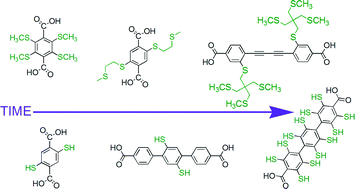Functional shakeup of metal–organic frameworks: the rise of the sidekick†
Abstract
Merging is the simple term that captures the spirit of this article. This refers to merging, both structurally and functionally, the distinct moieties of the backbone and the side group in the topical design of the porous solids of metal–organic frameworks (MOFs). As the backbone has been traditionally the focus of study, merging translates into the rise of the side group functions, which have of late proven to be increasingly important for the functionalization of the porous grid. The wide range of usable organic side groups, however, also presents a paradox of choice. Instead of mechanically latching the side groups onto the backbone (i.e., with their innate solution-phase reactivity more or less retained), we focus on distinct, dramatic synergism. Distinct being a subjective term open to dispute, we specify two modes of merging/integration. One involves the unconventional, backfolded shape of the ligand, in which rigid side arms coalesce with the backbones to generate multiple pre-assembled subunits (i.e., the simple tritopic subunits), each of which conforms to the traditional starburst shape. The other mode of merging involves crosslinking the side groups, which broadly ranges from the earlier use of simple σ bond links for mechanical locking in the MOF grid, to the use of more polarizable metal–chalcogenide or organic π bridges that stand to transform the insulating MOF grid into next-generation solid-state electronic materials.


 Please wait while we load your content...
Please wait while we load your content...